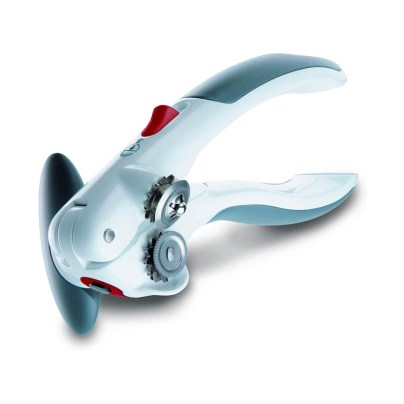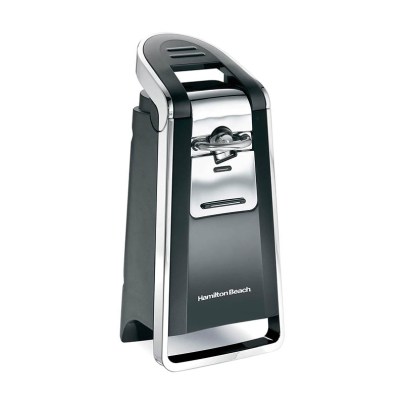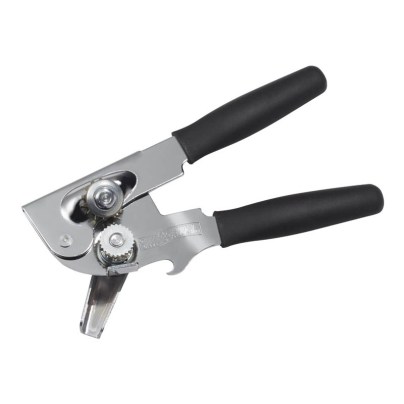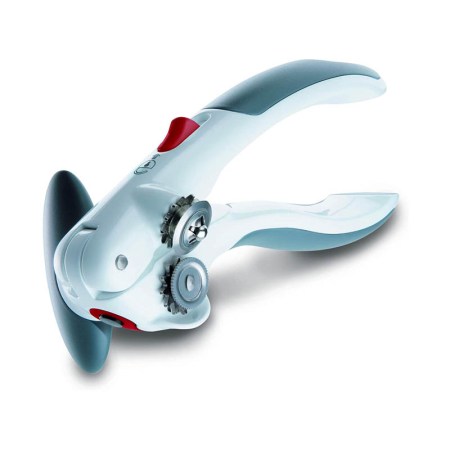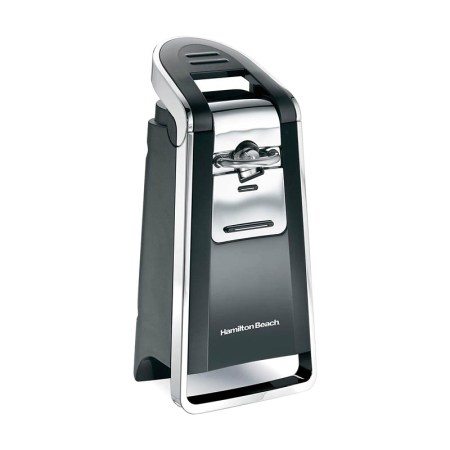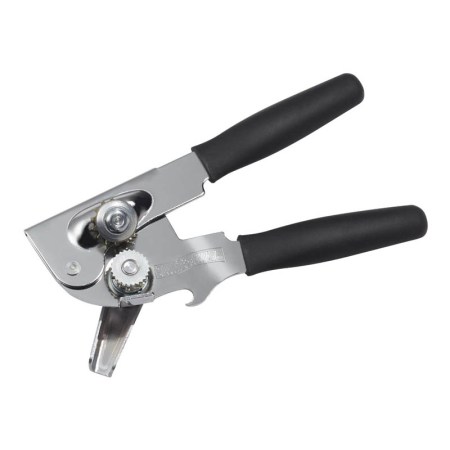We may earn revenue from the products available on this page and participate in affiliate programs. Learn More ›
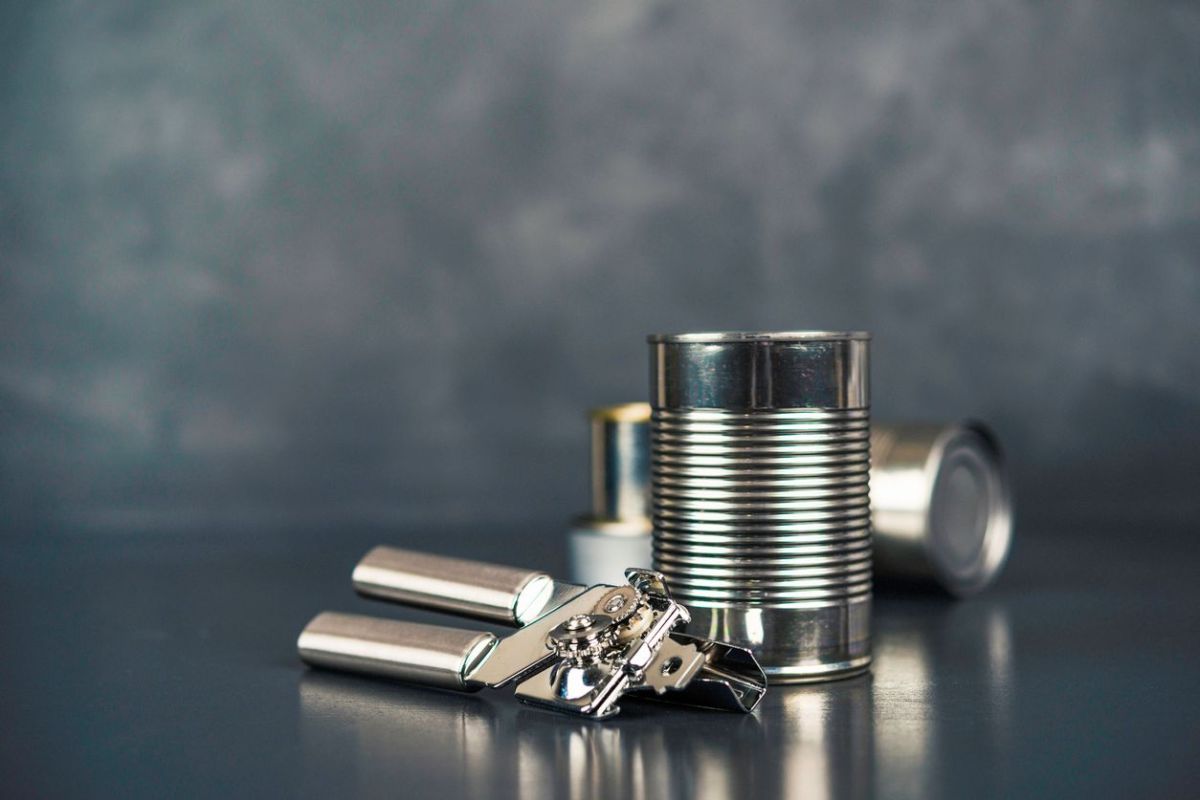
A can opener may not be one of the most exciting kitchen gadgets, but it’s certainly one of the most useful.
Unfortunately, using a can opener is, far too often, an exercise in frustration. There’s the manual can opener that keeps slipping off the edge of the can, or the electric can opener that never quite cuts the all the way around.
That’s why we’ve rounded up our favorites among the best can opener options out there. Continue on to see our picks and to learn all you need to know about the options available today, whether you’re setting up your first kitchen or replacing a decades-old can opener that no longer gets the job done.
- BEST OVERALL: ZYLISS Lock N’ Lift Manual Can Opener
- UPGRADE PICK: Hamilton Beach Electric Automatic Can Openerr
- BEST VALUE: Swing-A-Way Portable Can Opener
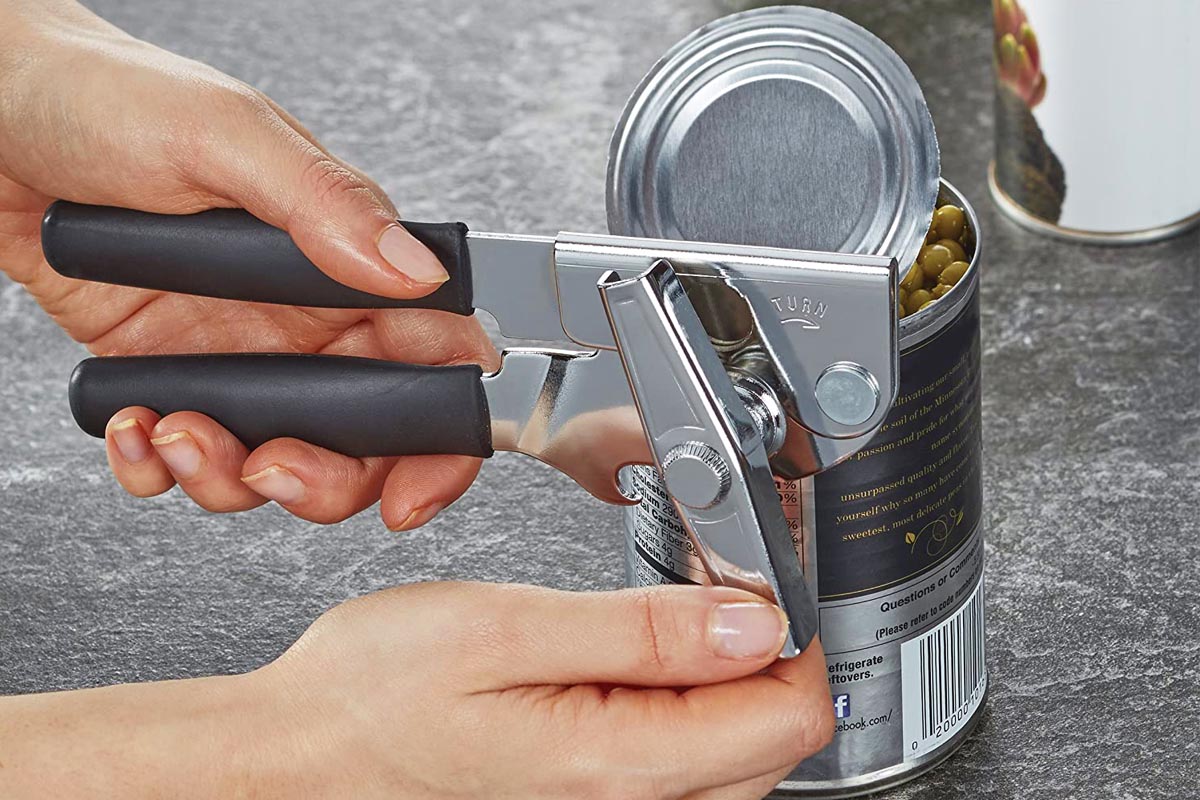
Types of Can Openers
There are two main types of can openers—manual and electric. Both types feature a sharp blade that pierces the can’s lid, as well as a gear that rotates around until the lid is cut. However, they differ in where the energy comes from to perform those functions.
Manual can openers require your hand power to work the device, as well as a fair amount of dexterity to keep the can in place while it rotates. These simple can openers have hinged handles and a crank. The cutting blade is attached to the head of one handle, the rotating gear to the other. To use the can opener, you position the cutting blade on the top of the can right against the lip, and then squeeze the handles forcefully until the blade pierces the metal. You then turn the crank to rotate the can until the lid is cut through all the way around.
While the process is simple in theory, it’s not unusual for the can to slip while rotating, or for the blade to lift a bit if your hand pressure wavers, which leaves an uncut section of the lid exposed. Plus, for those with weakness or discomfort in their hands, fingers, or wrists, using a manual can opener can be painful, difficult, or even impossible. Still, these tools are inexpensive, effective, and handy for most people. Plus, you’ll be able to open cans even during a power outage, which is an important consideration for those living in areas where such events are fairly common.
Electric can openers do the heavy work for you. These appliances have a magnet that holds the can in place while the blade automatically pierces the metal and a gear spins to rotate the can. There’s no need for you to coordinate squeezing and turning, as there is with manual can openers. Because the machine automates the process for you, it means no hand pain or strain, so even those with arthritis or hand weakness can easily open cans. But while an electric can opener makes quick and easy work of opening a canned good, it won’t be of use during a power outage, on a camping trip, or away from an electrical outlet.
Safety Can Openers
Traditional can openers, whether electric or manual, cut open the can from the top, with the cutting blade angled to slice through the metal around the upper perimeter of the can. While that certainly is effective, it can leave behind a very sharp edge around the inner rim of the can that can easily slice your finger if you aren’t careful. As an alternative and safer option, side-cutting can openers are also available. Known as safety can openers, these products can be found in both electric and manual versions, but reverse the position of the blade and gear from traditional devices. Instead of the blade on top and the rotating gear on the side, safety can openers position the rotating gear on top of the can, with the blade angled in to cut directly below the can’s top rim. That means the entire top of the can is cleanly sliced away, lip and all, eliminating the potentially dangerous inner sharp edge left by traditional can openers.
On the downside, because these can openers slice through the side of the can, where the metal is slightly thicker than the top, their blades tend to dull far faster than traditional can openers. If you use your safety can opener several times a week, it’s likely to only last one or two years before becoming too dull to work effectively. By contrast, a traditional can opener can last many years before wearing out. Plus, safety can openers typically cost twice as much as traditional models. Still, if you have young family members working in the kitchen–or adults prone to mishaps–a safety can opener is worth the extra cost.
Key Shopping Considerations
As both manual and electric can openers accomplish the same task, it’s the pros and cons that generally prompt buyers to choose one over the other.
Cost
Usually, manual can openers cost less than $20, while you’ll typically pay between $20 and $30 for an electric model.
Ease of Use
As a general rule, an electric can opener is much easier to use than a manual model, as the machine supplies the pressure and the coordination to keep the can rotating while the blade slices through the lid. That’s especially true if your hands are painful or weak. But a manual can opener with ergonomic, padded, and rounded handles is easy enough for most users to handle comfortably and effectively.
Storage
A manual can opener takes up little space inside your kitchen drawer. By contrast, an electric can opener takes up kitchen cabinet space–which is limited in many kitchens–unless you leave it out on the counter all the time.
Convenience
Because the power cord on an electric can opener is typically no longer than a couple of feet, you can’t use the device very far from an outlet. With a manual can opener, of course, you’re free to use it anywhere.
Material
On either type of can opener, a stainless steel cutting assembly supports strength and longevity.
Lid Lifter
Many of the best can openers–whether manual or electric–feature a magnet that lifts and holds the lid once it’s cut free from the can. This saves you from needing to fish the lid out of the can with your fingers, which is an easy way to cut yourself.
Can Size
While both types of can opener easily tackle average size cans, if you open a lot of oversize cans or very small cans, you’ll find that a manual can opener has an advantage here, as odd-sized cans sometimes don’t easily fit the base of an electric can opener.
Hand Preference
It doesn’t matter if you are left-handed or right-handed when using an electric can opener, but most manual can openers are specifically designed for right-handed use. If you’re a lefty, you’ll need to look for a left-handed version. Luckily, they aren’t too difficult to find on Amazon or kitchen supply stores.
Extras
Most can openers provide a use or two beyond opening cans. Many manual can openers also have a built-in bottle opener, while it’s common to find knife sharpeners on electric models.
Finish
While the finish doesn’t make much of a difference when it comes to a manual can opener, it can be important on an electric model that sits out on your counter. If so, you’ll find electric can openers with stainless steel, black, white, and colorful finishes, including red, yellow, and blue.
Cleaning
Most electric can openers have detachable cutting assemblies that are dishwasher safe. Not all manual can openers are dishwasher safe, however, so check the manufacturer’s instructions before cleaning your new tool.
Our Top Picks
Best Overall
ZYLISS Lock N’ Lift Manual Can Opener
See ItIt might not be an exciting task, but the ZYLISS Lock N’ Lift Manual Can Opener comes as close as possible to making opening a can almost enjoyable. With a slide of your thumb, you can “lock” the cutting wheel in place on the can, removing the common frustration of a lid only partially severed due to hand fatigue or lack of coordination. Plus, the handles are comfortably padded, ergonomically shaped, and won’t slip or slide in your grip, as is the crank. Perhaps best of all, there’s a magnet to secure the detached lid, and a small lever on the underside of the can opener that releases the lid right into the trash: No need for you to touch it and risk a cut or a mess. The cutting assembly is stainless steel for durability, and the can opener is dishwasher safe.
Upgrade Pick
Hamilton Beach Electric Automatic Can Opener
See ItHere’s an electric can opener that handles most cans effectively and safely, and looks good while doing it. The Hamilton Beach Smooth Touch Electric Can Opener has a streamlined chrome and black finish that’s attractive enough to leave out on kitchen counters, and its extra-tall design means it can handle even larger cans with ease. Using it is a breeze: Just position the can underneath the cutting assembly, touch the lever, and the device will take it from there, locking the can in place while the cutting blade does its work. This is a safety can opener, so the blade slices from the side, freeing the entire top of the can without any sharp edges left behind.
Best Value
Swing-A-Way Portable Can Opener
See ItIf you only need a manual can opener for your emergency supply kit–after all, your canned goods won’t do you much good in an extended power outage if you can’t open them–there’s no need to spend much more than a few dollars. The Swing-A-Way Portable Can Opener won’t break your budget, and while not fancy, it gets the job done. The handles are cushioned and the crank is extra-long, providing some comfort to your hands and making the tool easier to use. It’s made of steel, so it’ll last for years, and the skip-proof gear rotates the can smoothly so the lid severs cleanly–no annoying still-attached sections you’ll have to tackle twice. There’s a built-in bottle opener as well.
